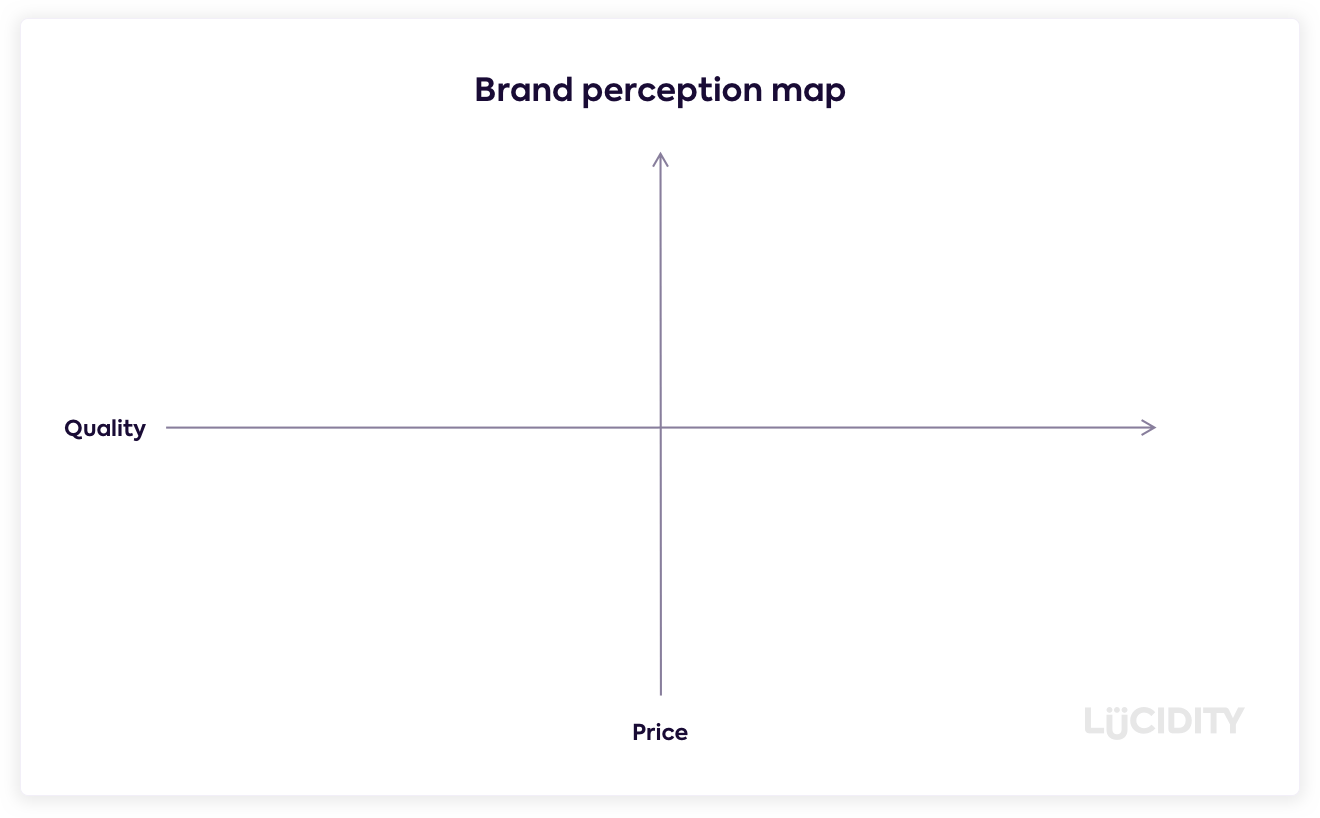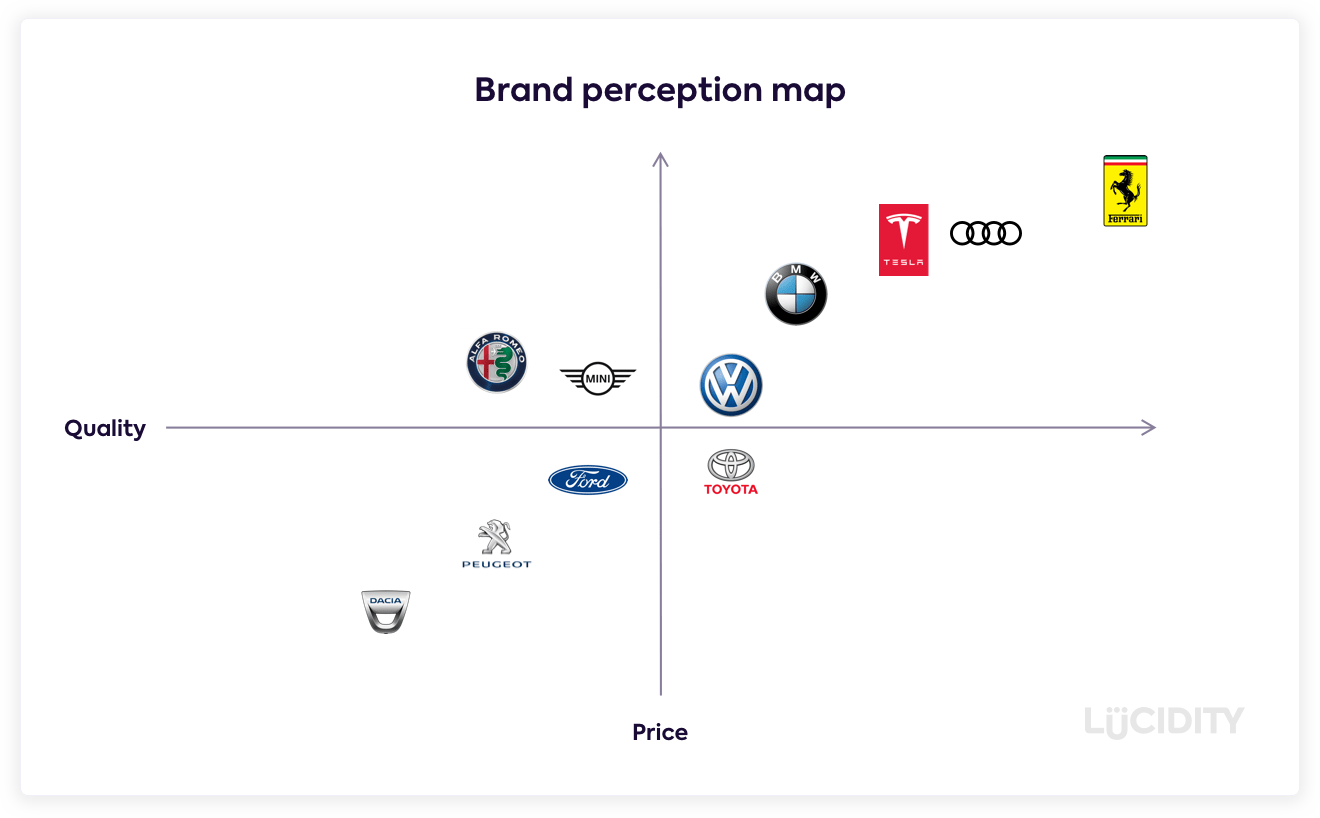Perceptual Maps are one of the most informative and simple frameworks. They’re a really helpful way to quickly see how you are positioned with other companies within your industry.
What is a Perceptual Map?
A perceptual map is a visual representation of different company positions within a market within a graph. It’s a quick way to see how companies compare and is commonly used by marketing teams.
What are the advantages of Perceptual Maps?
Perceptual Maps as a framework has several advantages:
- It’s simple to understand and use
- They are easy & quick to develop
- You can do it on your own, as a team in person, or as a group remotely
- It provides a clear look at your position in the market vs your competitors
What are some of the limitations of Perceptual Maps?
As with every tool, Perceptual Maps has some limitations
- The power of a Perceptual Map depends on selecting the right axis labels
- There is a low amount of detail, it’s a quick snapshot view
- The framework only really supports 2 measurements per company
- Positioning can be subjective
How do you make the most out of Perceptual Maps?
A Perceptual Map can be one of the quickest ways to understand a competitive landscape, helping you see the competition and spot opportunities. Unlike other tools such as SWOT and PESTLE, prework is required to get the most out of a Perceptual Map.
What prework should be done before a Perceptual Map session?
There are a number of points you’ll need to know before you define your Perceptual Map:
- Who are your competitors?
- What are the key factors for your clients?
- What is the perception of your business in your clientbase?
If in a group, these can be shared via an email beforehand or presented on the day.
What’s the best medium for Perceptual Map sessions?
Perceptual Maps rely much more on competitor research than brainstorming, so often are created by an individual and then presented back to the company. If done in a group it’s best to include members of your Sales & Marketing teams, who will be likely to provide insight into each position.
What is an example Perceptual Map?
How often are Perceptual Maps updated?
It is best practise to review your Perceptual Maps on a quarterly basis, as they help with your sales and marketing strategy decisions.
















